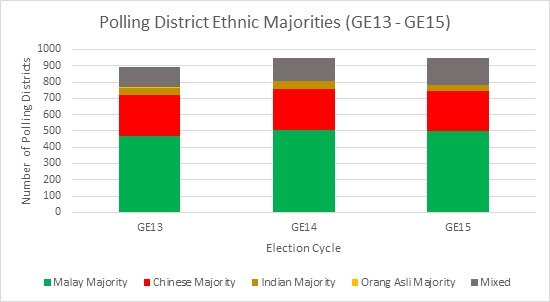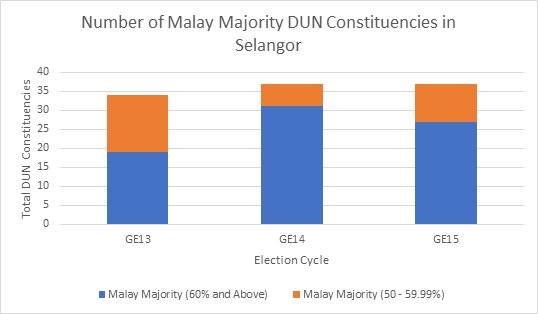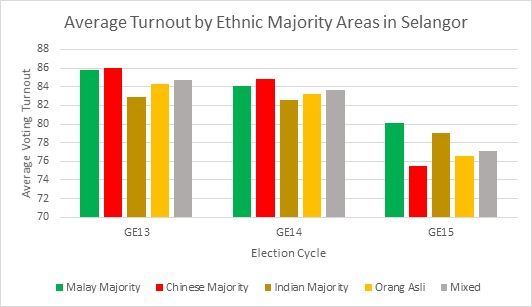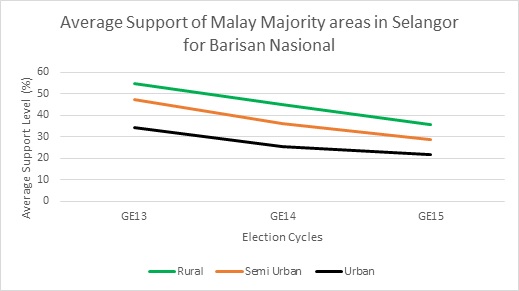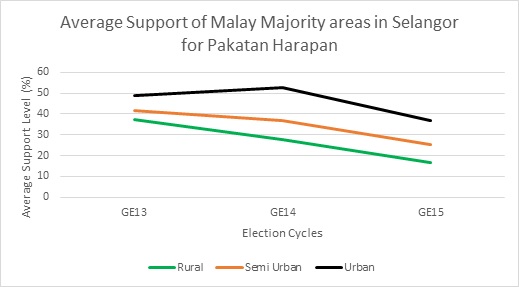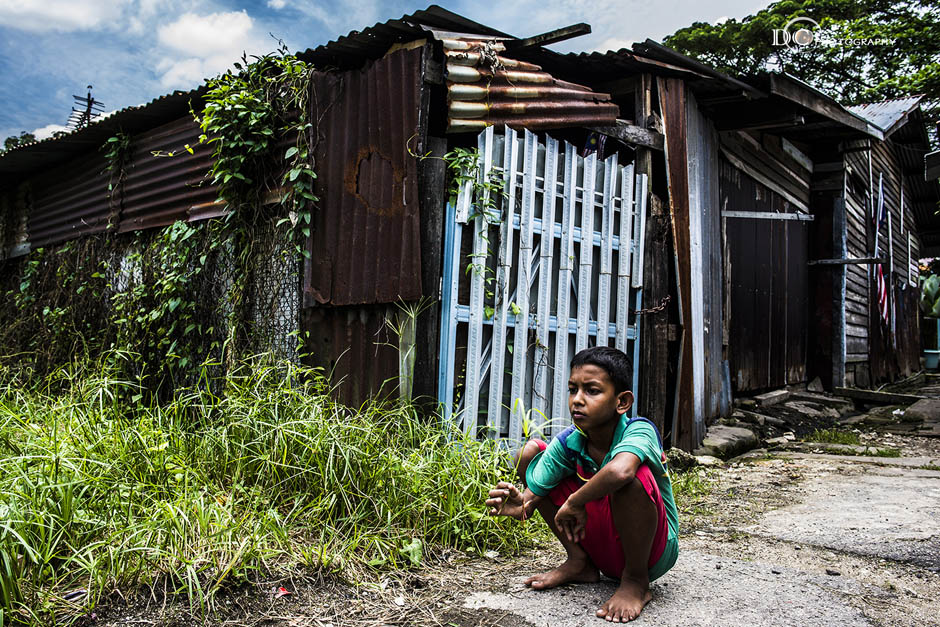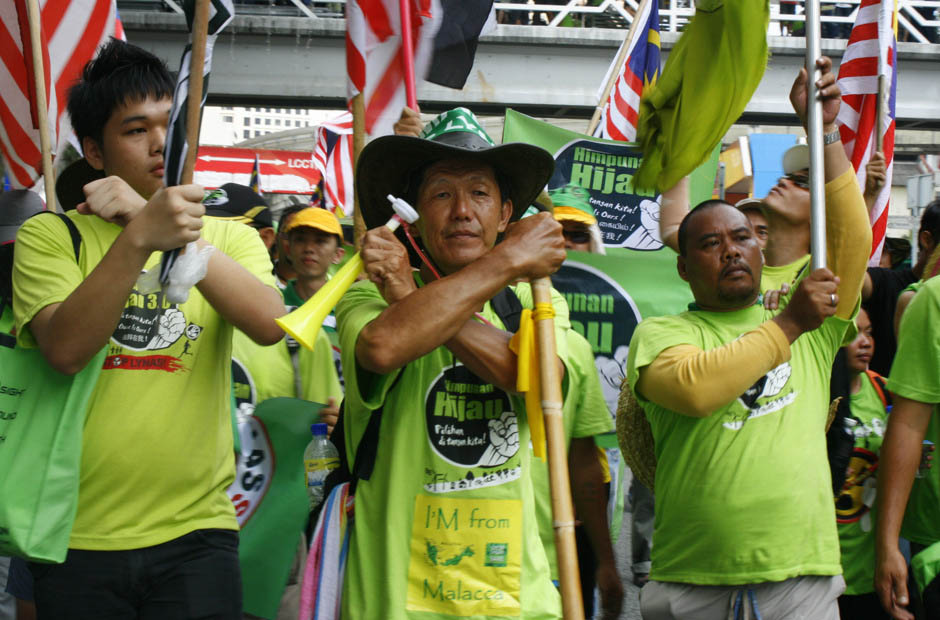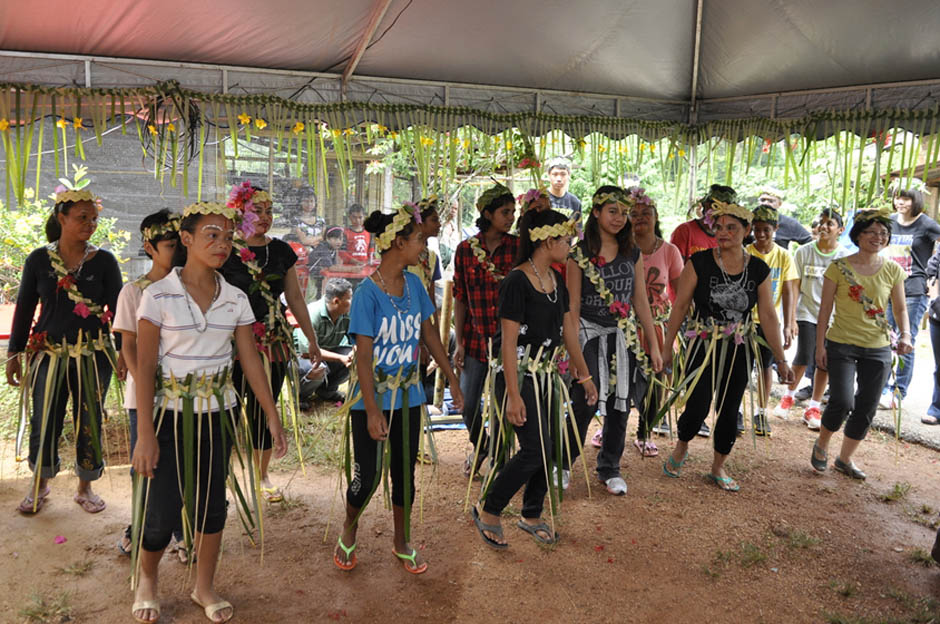| PRN 2023: SELANGOR Part 1 |
 |
 |
 |
| Tuesday, 08 August 2023 16:09 | ||||||||||||||||||||
|
Selangor: Evolution of Voting Trends (Part 1) Selangor, a crown jewel for then Pakatan Rakyat and now Pakatan Harapan, experienced big voting changes from GE13 to GE15. GE13 to GE15 voting patterns have shown both homogeneity and heterogeneity of voting blocks in Selangor. In this article, we will examine Selangor voting patterns from multiple lenses: ethnicity, urbanization, Felda presence, early voting and impact of third forces. Selangor has 56 state constituencies with an ethnic composition of slight Malay majority presence. In GE13, 50% of electors are Malays, 34% are Chinese, 14% are Indians, 0.3% are Orang Asli and remaining 1.7% are Others, Bumiputera Sabah and Sarawak. In GE14, Malay presence grew close to 52%, Chinese was 32%, Indians was close to 14%, 0.3% is Orang Asli and remaining 1.3% are Others, Bumiputera, Sabah and Sarawak. With the introduction of Undi18, Selangor composition got slightly mixed. Malay presence was reduced to 51%, Chinese was slightly below of 32%, Indians remain around 14%, Orang Asli presence grew to 0.4% and presence of Others (including Bumiputera Sabah and Sarawak) expanded to slightly over 3%. An examination of polling district ethnic demographics (refer to Figure 1) of GE13 to GE15 shown that GE13 to GE14 indicates a pattern an increase of Malay majority areas but Undi18 implementation resulted in an increase for mixed area (reducing homogenous areas).
Figure 1: Distribution of Polling District Ethnic Majorities of Selangor (GE13 to GE15) In terms of voter type, while not discounting importance of police and military voters, more than 98% of voters of Selangor was from Ordinary Voting category in GE13 and GE14. With the introduction of Undi18, military and police share shrank less than 1% of the electorate. However, Undi18 and more inclusive approach by EC to include overseas Malaysians for postal vote resulted in postal vote expansion in size and share (despite share police and military shrank). In terms of overall voting pattern, then Pakatan Rakyat (PR) won 44 out of 56 DUN constituencies in GE13 and its successor, Pakatan Harapan (PH) won 51 out of 56 DUN constituencies in GE14. If we were to look at Ordinary Vote, in GE13 (at DUN level), PR won 44 seats and using GE13 Parliamentary Ordinary Vote, PR won 45 seats. This is an indication of split voting and impact of infighting of opposition in two DUN seats. For GE14, using Ordinary Vote only, PH won 52 DUN seats. This is an indication of importance of postal vote and early voting for some seats (H won Hulu Bernam (DUN level) but with addition of postal and early voting, Barisan Nasional (BN) won the seat by 20 votes). GE15 witness dramatic turn of events where PH + Muda would have won by 41 out 56 seats (below two-thirds majority) in the Ordinary Voter Category. Perikatan Nasional (PN) won 14 DUN seats using GE15 results and most of these seats won by PN with less than 50%. Even if BN and PH parties were to instruct all their base to support each other, Padang Serai and Tioman by-elections after GE15 shown the reciprocity was one sided. Hence, it will be an uphill challenge for PH and BN to win those 14 DUN seats.
Malay Voting Pattern: Moving away from Barisan Nasional
As Malay voters constitute slight majority of the State electorate scene, they represent a spectrum of voting preferences (going beyond the conception of being hard core voting block for one party). In GE13, 34 out 56 DUN seats were Malay Majority. After the redelineation of 2018, the number of Malay Majority seats increased to 37 (same for GE15). Undi 18 resulted in more mixing of the constituencies and this could explain the reason on why the number of more homogenous Malay majority seats declined (refer to Figure 2).
Figure 2: Type of Malay Majority Seats in Selangor (GE13 to GE15) Among all the communities in Selangor (from ethnic lens), on average, they have one of the highest voting turnout rates for GE13, GE14 and GE15 (refer to Figure 3). In GE15, their turnout was highest among all the communities in Selangor. While there was a decline in turnout over the years, decline rates for Malay voters are generally lower compared to other communities in GE15 with the exception of Indian community. Generally speaking, a rural or semi urban Malay voters have average turnout slightly higher compared to the urban counterpart. In GE13, average turnout of rural Malay voter was 87.22% while average urban Malay voter turnout was 84.79%. In GE14, average turnout of rural Malay voter was 84.17% and average turnout of urban Malay voter was 83.71%. In GE15, average turnout of rural Malay voter was 80.59% and average turnout of urban Malay voter was 79.35%.
Figure 3: Average turnout of Ethnic Majority areas for Selangor (GE13 to GE15) In terms of voting preferences, Selangor Malay voters have pivoted away from BN since GE13. In Malay majority polling district for GE13, 52% of the votes went to BN and 44% went to PR. In GE14, PH overtook BN as the lead party for Malay majority areas (45% voted for PR and 32% voted for BN). PH gained new 8 Malay majority seats from BN (Batang Kali, Permatang, Bukit Melawati, Jeram, Kuang, Semenyih, Kota Damansara and Dengkil). In GE15, dramatic voter preference shift took place in Malay majority polling districts where Malay voters preferred PN over BN and PH. PN snatched all BN Seats of GE14 (Sungai Air Tawar, Sungai Panjang, Hulu Bernam and Sungai Burong) and took nine seats from PH. Urbanization level of Malay majority of polling districts play an important influence in determining Malay voting preference (for BN, PR/PH, PN). For example, an urban Malay Majority area in GE13 would give 49% of their votes to PR compared to 38% for PR in rural area. Having said that, urban Malay support for Pakatan is known to fluctuate and by GE15, Pakatan commanded 38% of urban Malay majority vote (PN obtained 37%). BN once commanded around 60.55% of the votes in rural Malay majority areas in GE13 and this has been reduced to 35.65% of votes in same rural environment. PN has become the leading party for rural Malay majority areas. The big fluctuations that take place among different urban tiers of Malay majority areas also appeared in Felda polling districts in Selangor. While Felda population is very small in Selangor, its voting patterns also indicate Malay voters are deserting from BN. Felda polling districts constitute 6 out 945 polling districts in Selangor and found in DUN Hulu Bernam, Batang Kali and Jeram. Felda voters constitute up to 30% of Hulu Bernam electorate. In GE13, BN Nasional on average commanded 69% of Felda Votes in Selangor where its rival – PR – only gained 29% of the votes. In GE14, BN maintained a slight majority (50.42%) in Felda areas of Selangor as Felda voters started shifted to Gagasan Sejahtera (Pas lead Coalition) primarily, followed by PH. In GE15, BN completely lost its grip (39.5%) on Felda area, PH gains completely reversed and PN manage to win 5 out of 6 Felda polling districts.
In short, Malay voters in Selangor has shown their willingness to switch out parties and loyalties significantly. Urbanization and homogeneity levels of the area indicate significant variation of Malay voting patterns In the next section, we will assess evolving voting patterns of Non-Malays, early voting and impact of third forces DANESH PRAKASH CHACKO is a Research Analyst at Jeffrey Sachs Centre, Sunway University. He also serves as Director of Tindak Malaysia, an electoral reform NGO. |
||||||||||||||||||||
| Last Updated on Tuesday, 08 August 2023 18:10 |

